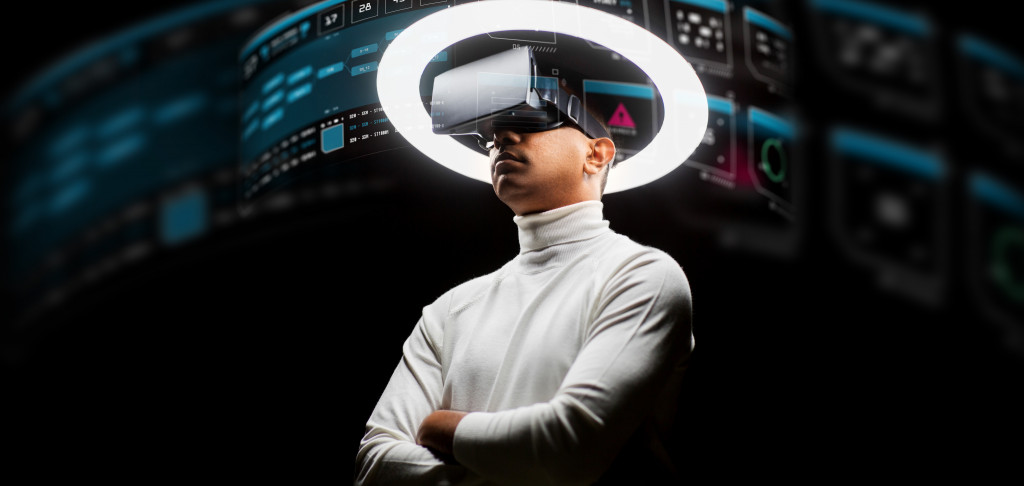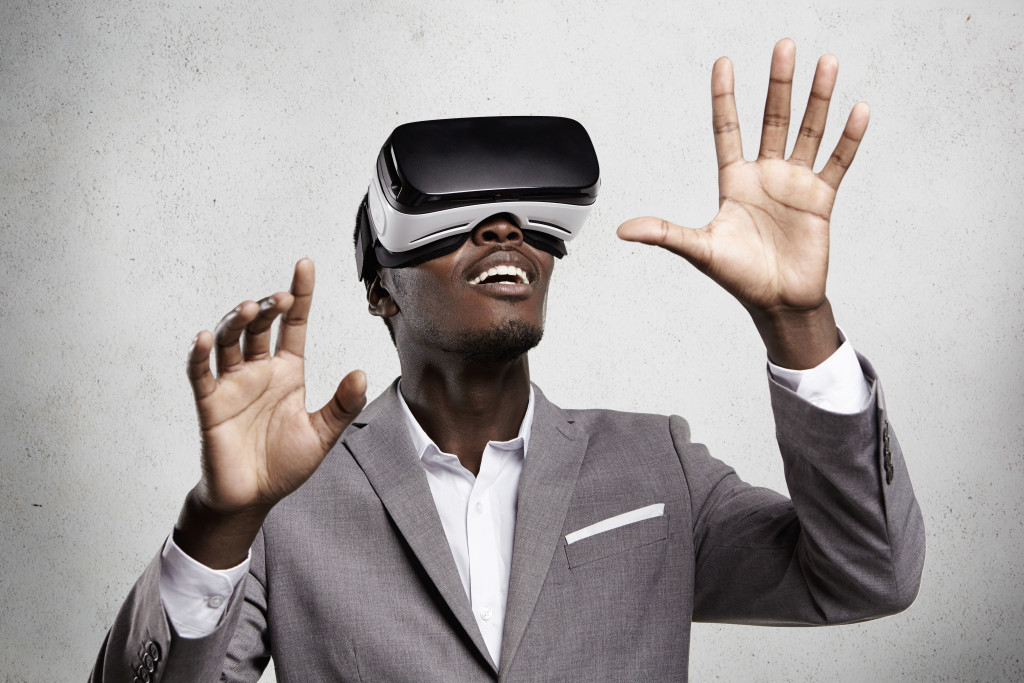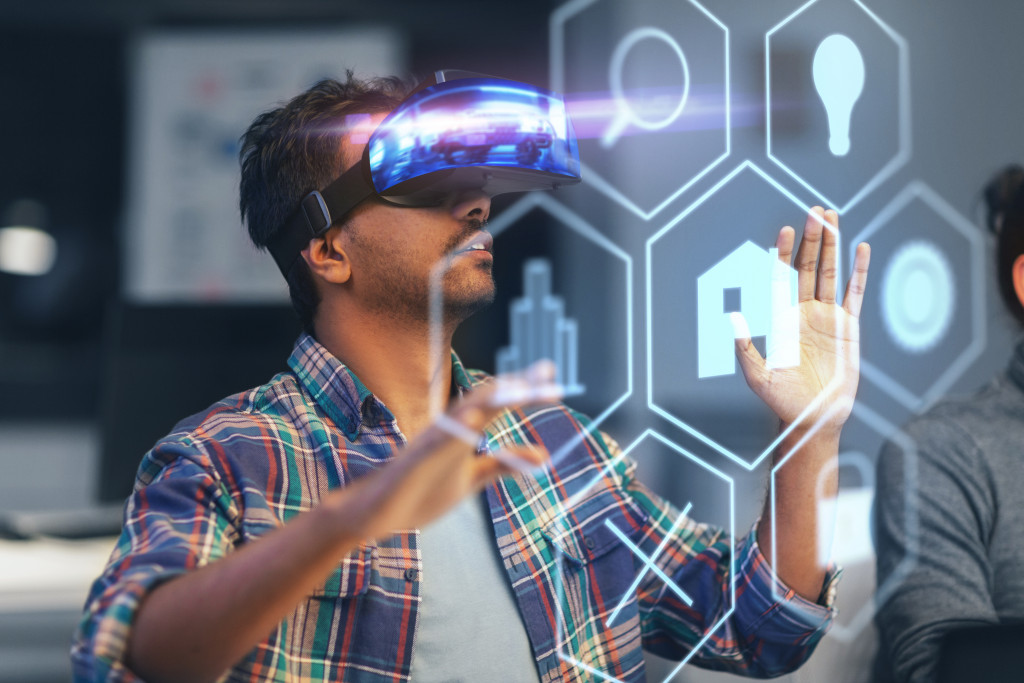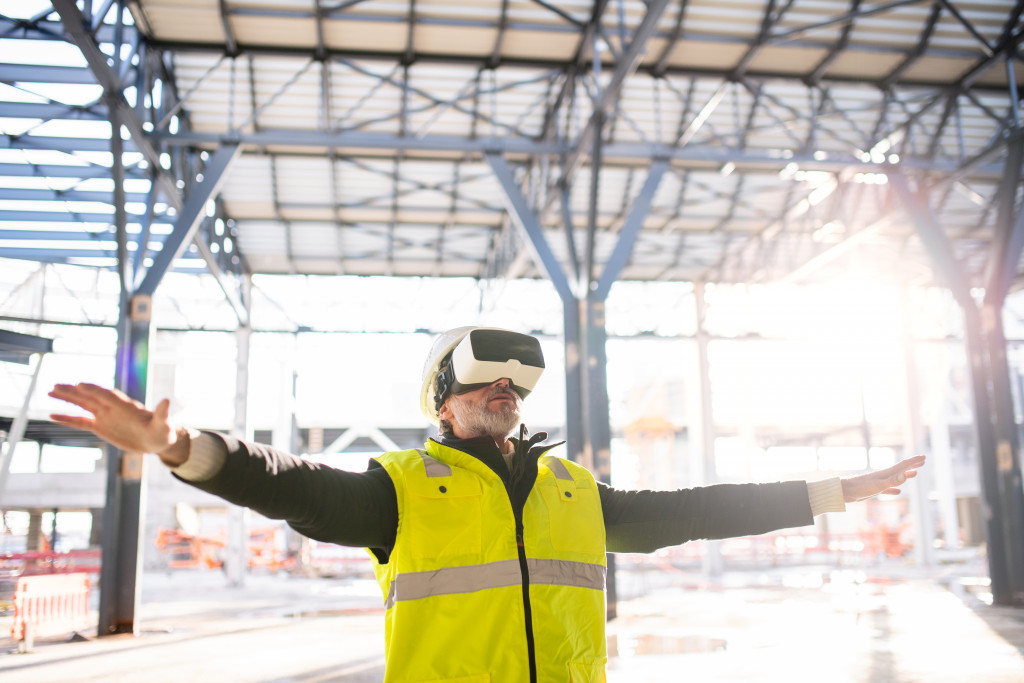- VR and AR are emerging technologies that are revolutionizing the building industry by providing realistic simulations and streamlining construction processes.
- VR lets builders virtually walk through blueprints, visualize progress, and strategize workflows without being physically on-site.
- AR provides a real-time layer of data that helps identify potential risks, refine digital models and make better-informed decisions.
- Data analytics can detect temporal patterns leading to unsafe rigging conditions while helping technicians stay on schedule.
- VR-assisted construction projects have the potential to save time and money by immersing builders in a simulated environment.
The building industry is no stranger to innovation, with methods and materials evolving from their earliest forms. As the world advances technologically, more advanced solutions are available for construction businesses and professionals. Virtual Reality (VR) and Augmented Reality (AR) represent two of these progressive innovations that have started to revolutionize how projects are planned, built, maintained, and twisted into shapes never imagined imaginable before.
From full-scale pre-visualization in virtual reality environments supported by complex calculations through AI toolsets to detailed simulations in augmented reality conforming exactly over a physical medium, this virtual revolution is taking the building industry leaps forward into the future.
What are VR and AR
Virtual reality (VR) and augmented reality (AR) are becoming increasingly essential technologies for the construction industry. VR provides realistic simulations that help planners visualize the end product before it’s even built. AR overlays digital information on physical objects in the real world through a device like smart glasses.
This way, teams can virtually walk through blueprints as if they were on construction sites and visualize progress without being physically present, helping them strategize better and plan their workflow. By using these two technologies, builders and architects can work faster and more efficiently than ever before—leading to greater accuracy across the board.

How are They Changing the Building Industry
The arrival of Virtual Reality (VR) and Augmented Reality (AR) technologies is blazing a new trail for the construction industry, enabling businesses to make better-informed decisions before breaking ground on any project. These tools can virtually replicate the construction process and create 3D models to see how a building will look at completion without investing resources into physical sites or materials.
AR offers a real-time layer of data that improves the accuracy of designs and provides information relevant to any potential problems in the field. As technology evolves, it continues to disrupt traditional models by providing additional insight that quickly identifies potential risks and helps refine digital building models.
This reduction in costs makes VR and AR invaluable resources to the modern construction industry across all stages of development.
Improved Planning and Design
The introduction and integration of Virtual Reality (VR) and Augmented Reality (AR) in the construction industry are making waves. Improved planning and design are some of the remarkable benefits that the technology has brought with it.
By creating a virtual environment, engineers have been able to simulate designs, check for faults or errors, understand user interactions, optimize construction processes and even identify potential hazards before any physical work is executed on-site. This means projects can be completed faster and more efficiently without affecting safety standards.
In addition, AR allows for real-time viewing of a specific task which can ultimately help track progress and anticipate issues early on in the construction process.
Enhanced Safety and Training
With the advancement of Virtual Reality (VR) and Augmented Reality (AR) technology, the construction industry is beginning to see increased job site safety, efficiency, and better overall performance. With VR and AR, companies reduce training costs, decrease human errors, visualize risks before they happen, and provide a realistic understanding of the actual environment where workers perform their tasks.
This technology also allows for more effective ways to plan projects and find any potential issues with processes before they arise on the job site, which leads to higher productivity with fewer errors.
Use Data Analytics
The use of data analytics in the construction industry is revolutionizing the way rigging trainings are managed. Collecting and analyzing large amounts of data can identify potential risks, help technicians stay on schedule, and encourage better performance. Data analytics can detect temporal patterns that may lead to unsafe rigging conditions and provide actionable information to safety teams, allowing them to take preventive measures.
Furthermore, it enables rigging workshop managers to focus on areas with the greatest return on investment and plan a more effective procurement process. This can make rigging workshops safer and more efficient while providing real-time feedback, so they can constantly implement necessary changes.
Streamlined Constructions Processes
Virtual Reality (VR) and Augmented Reality (AR) technologies are aiding in streamlining construction processes, increasing accuracy, enhancing on-site safety, and enabling builders to plan a better project strategy. It allows for more efficient virtual team collaboration, reducing project completion time. Not only does this reduce the chances of any errors occurring, but it also increases the quality and reliability of a project.
VR and AR technologies allow for greater flexibility in construction processes, as planners can quickly adjust designs or align models with existing structures. This can help save time on site by eliminating the need for manual measurements and provide better visuals to stakeholders, enabling them to view an accurate representation of the final product.

The Future of Virtual Reality-Assisted Construction Projects
The possibilities that Virtual Reality (VR) and Augmented Reality (AR) provide to the construction industry are practically limitless. By immersing builders in a simulated environment where they can observe, inspect and modify their projects’ virtual models before construction begins, VR-assisted construction projects are projected to save builders money and time.
With AR, build teams can see exactly how different parts interact together, view complicated 3D shapes better than traditional plans, or get a closer look at real-world space without physical access.
Modifications can also be made on-site with minimal disruption as well as assess if certain materials should be used before committing expensive resources. Using these technologies, builders can prepare more adequately while setting realistic expectations for future project development and progress.

In conclusion, virtual and augmented reality are revolutionary tools that have effectively transformed many areas in the construction sector. The introduction of the two technologies has enabled professionals in this field to plan and design projects more efficiently, make buildings safer, maximize data utilization, and streamline construction processes. These features have allowed engineers and builders to work faster with fewer human errors.
Moreover, using these technologies drastically shortens build times granting them more effective control over their projects. Undeniably, augmented and virtual reality has revolutionized the industry making the building process more efficient, allowing them to complete large-scale projects with greater accuracy and less time. The future of virtual reality-assisted construction projects will bring much innovation, significantly benefiting the entire industry.
